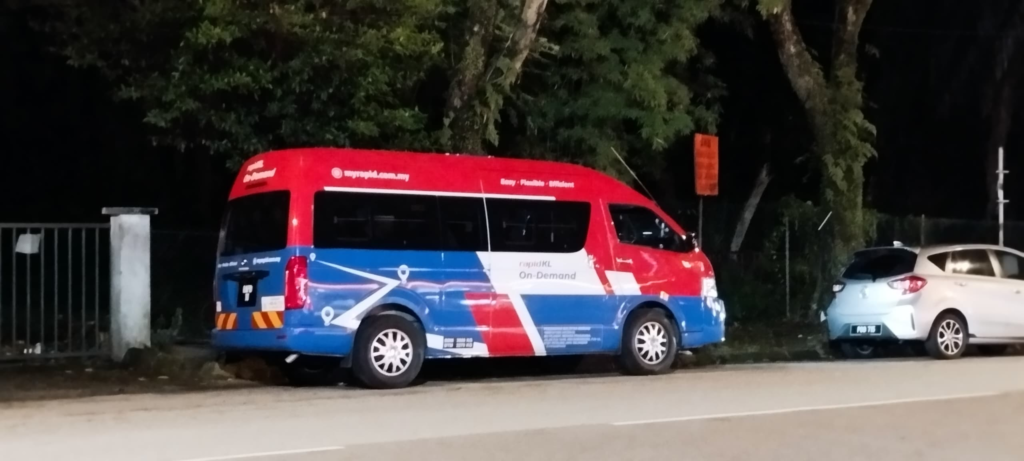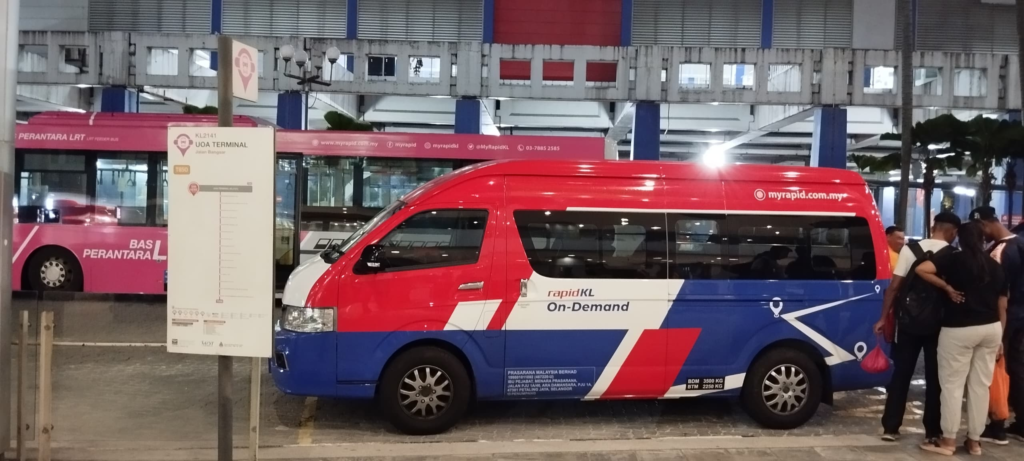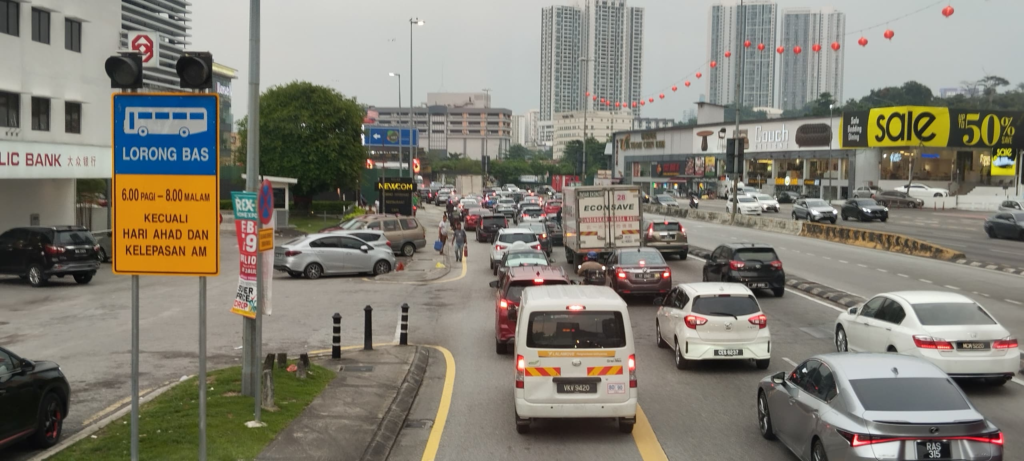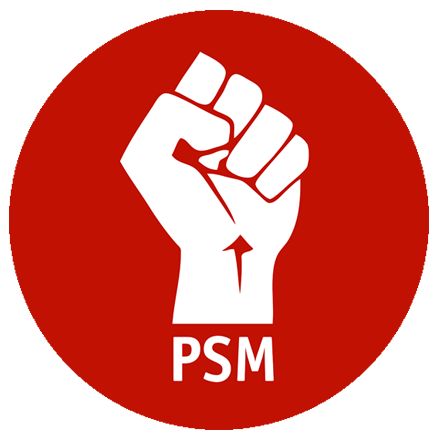
Taman Desa, nestled amidst busy throughfares and highways in Kuala Lumpur now has a new vehicle plying its roads. Two of RapidKL’s new on-Demand vans now provide another option for getting around in this neighbourhood.
Trips can be booked using the Trek app. In the app, there are pickup/dropoff points along bus stops and several high density condominium developments. The fare costs RM1 during this promotional period, and can be paid for with either a Touch n Go card, or GrabPay.

In my experience, I found the rides to be fast and smooth. In the span of only 2 minutes, the transit van picked us, in the heart of Taman Desa’s commercial zone.
Along the journey, the route takes us past many terrace houses, and some newer, high density developments. On this trip, the van heads to a ramp, toward the Federal Highway. Next, an elevated expressway towers above, casting its shadow over the neighbourhoods it divides.
Under 9 minutes, the trip came to an end, as we reached Jalan Klang Lama. This route is easily accessible, served by both the 600 and 640 trunk route buses.
In recent days, the number of riders on the rebranded DRT has increased. The vans are kept busy, heading to and fro.

Since August last year, the start of bus lanes along several major roads in Kuala Lumpur has improved bus times. 1Another benefit is riders arrive at their destination sooner too. The 650 on the Taman Desa route is no exception, and makes faster trips too.
In 2023, the adding of the T585 MRT feeder bus, adds to the residents’ connectivity.

However, the lack of enforcement prevents the bus lane from reaching its true effectiveness. In the rush hour traffic, private car drivers block the buses from passing through.
A rethink of city planning needed
The introduction of demand responsive vans vans improves first-last mile connectivity. The bus lanes on major road improve the frequency of the buses, reducing waiting time for users.
While the DRT vans is a commendable step, there are concerns on the maintenance, and higher cost, over the longer term.
But, there are systemic issues at play. there is some rethinking needed by other relevant stakeholders. This is particularly when development projects kick off despite lacking local resident engagement. Those people who will bear the brunt of the impact in the construction phase.
New developments should include easy transport access for the people. Accessible bus stops facilitate quicker commutes. Adequately frequent bus trips allow for people to move around faster, and less time spent ‘wasted’ in waiting to interchange.
Transit oriented developments (TOD) enable people to get from point to point, without private motorcars. Thus so, reducing the need for larger area footprint needed for park and ride facilities.
Some improvements to be done
For RapidKL/Trek, an extra stop for Sri Lempah flats will benefit residents in the further blocks, as well.
Local issues such as the lack of proper sidewalks are obstacles that discourage locals from other ways of getting around.This reinforces motorcar use for even mundane of everyday chores.
For DBKL, the present bus stop along Jalan Desa, opposite Taman Desa Medical Centre is in need of a larger shelter for the benefit of the bus users.
Meanwhile, another bus stop stands on three good, load bearing legs, while the fourth leg is bent out of shape. Being out of alignment, it may pose a risk to the users of the bus stop. KL1209 Taman Desa (Selatan).
Another obstacle to pedestrians stands beside the Casa Desa Condominium. The wall and abrupt end to the sidewalk forces pedestrians onto the road. Placed at a hill incline, this endangers safety as the incline reduces driver visibility of people on the road.
Larger issues at heart
On the 11th of February, residents of Taman Desa came together to oppose the land approval to a private developer for a condominium project. 2 The land was reserved for a future police station to be built there. 3
Just opposite the site, a park and its playground along Jalan 3/109F was fenced off, and the land sold to a developer, last year. 4
It is said there are already 34 condominiums in Taman Desa, with 6 more under construction. As these projects go up, the residents are facing the brunt, with falling objects, flooding and the like. 5
These are valid concerns of overdevelopment in a neighbourhood where the infrastructure has not kept apace. 6
Lastly, there is a need for a more responsive city council, to engage with representation from the local residents of whom the changes will affect.
Bryan Rozells
Kuala Lumpur Resident
Parti Sosialis Malaysia
1 (Source: https://www.thestar.com.my/metro/metro-news/2025/02/16/rapid-bus-extends-dedicated-lane-on-jalan-ampang)
2 (Source: https://www.thestar.com.my/metro/metro-news/2025/02/12/protest-against-loss-of-police-land)
3 (Source: https://www.freemalaysiatoday.com/category/nation/2025/02/11/no-need-for-another-condo-in-taman-desa-say-residents/
4 (Source: https://www.malaymail.com/news/malaysia/2025/01/14/taman-desas-last-public-park-stands-alone-as-developments-encroach-residents-say/160118
5 (Source: https://www.malaymail.com/news/malaysia/2025/01/14/taman-desas-last-public-park-stands-alone-as-developments-encroach-residents-say/160118)
6 (Source: https://www.malaymail.com/news/malaysia/2025/01/15/taman-desas-infrastructure-strain-is-the-township-ready-for-70000-residents/161135)
